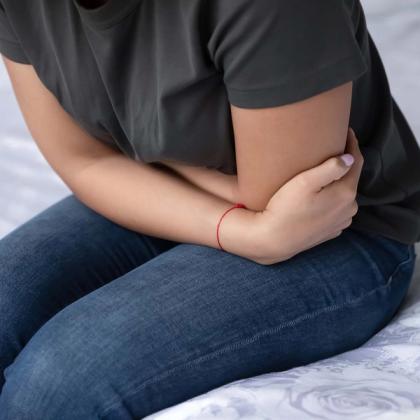Irritable bowel syndrome (IBS) is a chronic condition characterised by abdominal pain associated with bowel dysfunction and is one of the most common gastroenterology presentations in primary care. The pain is often relieved by defecation and is sometimes accompanied by abdominal bloating, with no structural abnormalities to explain the pain. IBS occurs in up to 20% of the adult population, and its aetiology is multi-factorial. In this episode, Dr Roger Henderson looks at the diagnosis of IBS along with lifestyle options and newer medications now available for its management.
Key take-home points
- IBS is a chronic functional gastrointestinal disorder that presents with abdominal pain and altered bowel habits.
- It affects about 20% of the general population, is more common in women and has a considerable impact on quality of life and healthcare costs.
- The clinical presentation can be typically characterised by abdominal pain associated with a change in stool frequency or form, in the absence of any organic disease.
- According to the Rome IV criteria there are four main IBS types: IBS with constipation (IBS-C), IBS with diarrhoea (IBS-D), IBS with a mixed pattern of constipation and diarrhoea (IBS-M) and unclassified IBS.
- The exact cause of IBS remains unclear but has a multifactorial nature.
- Approximately 10% of patients who develop IBS have a previous history of enteric infections and 3–36% of cases of gastroenteritis are followed by persistent IBS symptoms – so called “post infective IBS”.
- Food allergies are rare among patients with IBS, but intolerances are quite common.
- IBS symptoms are worsened by psychological distress and in turn abdominal pain and changes in bowel habits can worsen symptoms of anxiety and depression.
- When making a diagnosis of IBS, patients must give at least a 6-month history of abdominal pain or discomfort, bloating or a change in bowel habit.
- Consider positively diagnosing IBS only if abdominal pain is either relieved by defecation or associated with altered bowel frequency or stool form and at least two of these are present: altered passage of stool (straining, urgency and incomplete evacuation); abdominal bloating, distention, tension or hardness; symptoms aggravated by eating; and the passage of mucus rectally.
- The onset of symptoms must occur at least 6 months before the diagnosis.
- Exclusion of an organic cause of symptoms requires taking a detailed medical history and physical examination, with special attention to red-flag symptoms.
- An urgent 2-week referral is appropriate if signs and symptoms of cancer are present in line with NICE guidance on recognition and referral for suspected cancer.
- All patients meeting the symptomatic criteria for IBS should have full blood count, inflammatory markers, antibody testing for coeliac disease and faecal calprotectin tests where appropriate. For women, CA125 may also be appropriate to rule out ovarian cancer.
- Lifestyle interventions, such as dietary modifications, physical activity and stress reduction are the most important nonpharmacological treatments.
- When looking at pharmacological treatments in IBS, target individual symptoms, such as diarrhoea, abdominal spasm, bloating or constipation.
- If diarrhoea is a symptom, then loperamide is often the medication of choice.
- If there is abdominal pain and spasm, antispasmodics should be tried such as alverine, mebeverine and peppermint oil, which have a good safety profile.
- Should constipation be the key symptom then a laxative of choice may be used as required, and linaclotide has recently been added as an option here when other laxatives have not worked and constipation has been present for 12 months.
- Antidepressants can be of benefit, with NICE guidelines suggesting the use of a selective serotonin reuptake inhibitor only if a low-dose tricyclic has not been effective.
- IBS prognosis is highly variable, and over half of all IBS patients remain symptomatic 7 years after initial presentation.
Key references
- Lacy BE, et al. Am J Gastroenterol. 2021;116(1):17-44. doi: 10.14309/ajg.0000000000001036.
- Chang L, et al. Gastroenterology. 2022;163(1):118-136. doi: 10.1053/j.gastro.2022.04.016.
- Lembo A, et al. Gastroenterology. 2022;163(1):137-151. doi: 10.1053/j.gastro.2022.04.017.
- Chey WD, et al. Gastroenterology. 2022;162(6):1737-1745.e5. doi: 10.1053/j.gastro.2021.12.248.
- NICE. 2016. https://www.nice.org.uk/guidance/qs114.
- Vasant DH, et al. Gut. 2021;70(7):1214-1240. doi: 10.1136/gutjnl-2021-324598.
- NICE. 2023. https://www.nice.org.uk/guidance/NG12.
- Fjeldheim Dale H, et al. Nutrients. 2019;11(9):2048. doi: 10.3390/nu11092048.
Create an account to add page annotations
Add information to this page that would be handy to have on hand during a consultation, such as a web address or phone number. This information will always be displayed when you visit this page
